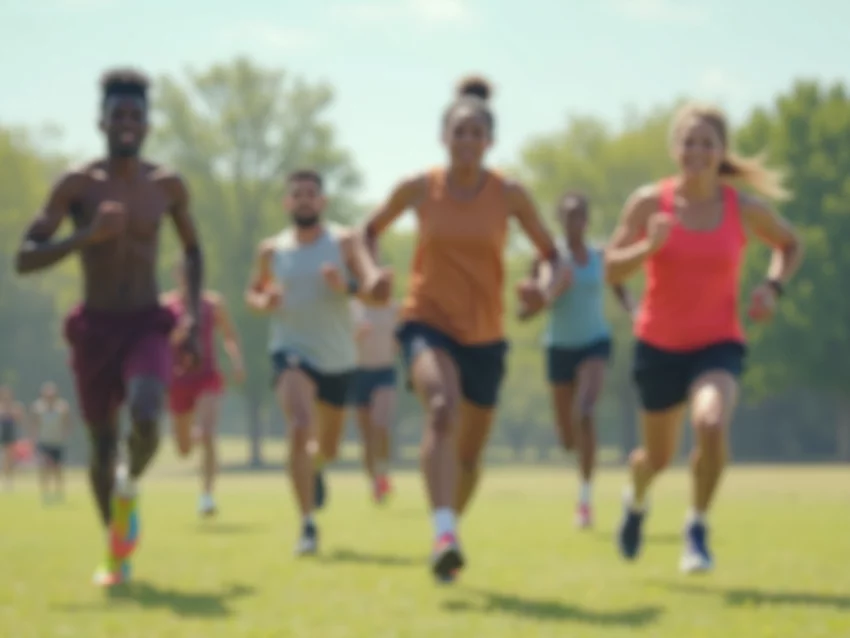Movement Science in Exercise Physiology
By Dr. Lena Schippert / Nov 10
In the world of fitness, understanding the intricate relationship between how we move and the science behind exercise can dramatically elevate your performance. Are you ready to unlock the secrets of movement science and exercise physiology? Let’s delve into the key insights that can transform your training approach!
This visual illustrates the foundational concepts within Movement Science and Exercise Physiology, highlighting their benefits and actionable applications for enhanced athletic performance and injury prevention. Functional fitness meets movement science to create a holistic approach to physical well-being.
Movement science and exercise physiology are two sides of the same coin, offering insights into how we move and perform. Understanding these concepts is essential for anyone looking to enhance their fitness level or athletic performance. It's a fascinating journey into the mechanics of the human body and how it interacts with physical activity!
At Functional Fitness & Movement Science, we delve deep into these subjects to help you grasp the intricacies of movement. By exploring the connection between these disciplines, we can better appreciate how they contribute to our overall health and functionality.
Movement science is an interdisciplinary field that examines how humans move, focusing on the biomechanics, motor control, and sensory systems involved in physical activities. It encompasses several key concepts:
Each of these disciplines plays a vital role in enhancing our understanding of how to improve functional fitness and prevent injuries. By recognizing the interplay between these areas, we can tailor training programs that promote not just strength, but overall movement efficiency! For a deeper dive into how biomechanics contributes to preventing injuries, consider reading about biomechanics for injury prevention.
Exercise physiology focuses on the body’s responses to physical activity and how it adapts over time. It encompasses various aspects of human performance, including:
As an exercise physiologist, I often find that recognizing these systems helps individuals optimize their training regimens. By understanding how our bodies react to exercise, we can make informed decisions on how to push our limits safely and effectively.
Exercise physiology plays a crucial role in athletic success, as it provides the scientific basis for training methods that enhance performance. Key factors include:
In my experience, athletes who embrace the principles of exercise physiology often experience significant improvements in their performance. By gaining a deeper understanding of their own bodies, they can train smarter, not harder!
How have you integrated movement science principles into your training or fitness routine? Share your thoughts below:
Understanding the benefits of movement science in athletic training is crucial for anyone looking to enhance their performance. By integrating concepts from both movement science and exercise physiology, athletes can achieve superior outcomes. Movement science provides insights into biomechanics and motor control, while exercise physiology focuses on the body's responses to physical activity. Together, they foster a comprehensive training approach that elevates performance.
Here are some key takeaways to consider:
These benefits highlight the importance of a well-rounded approach to athletic training, emphasizing the need for both theoretical understanding and practical application.
Ready to start applying movement science principles in your training? Here are some actionable steps you can take:
By taking these steps, you can begin to integrate movement science into your training regimen, leading to improved performance and reduced injury risk. Remember, it’s all about making informed choices!
Nutrition plays a vital role in athletic performance, and understanding how it interacts with movement science can make a significant difference. Fueling your body with the right nutrients supports energy production and recovery. Here are some key nutritional considerations:
By focusing on these nutritional aspects alongside movement science practices, you can further enhance your athletic performance and overall well-being. Remember, every little adjustment counts towards reaching your goals! For more detailed information on preventing injuries, explore injury prevention exercises for training.
Here is a quick recap of the important points discussed in the article:
Movement science is an interdisciplinary field that studies how humans move. It integrates concepts from biomechanics (the mechanical laws of movement), kinesiology (the scientific study of human body movement), and motor control (how the brain coordinates muscle movements).
Exercise physiology is the study of how the body responds and adapts to physical activity. In athletic performance, it helps assess performance, create customized training programs based on individual physiological responses, and implement effective recovery strategies to enhance longevity and optimize results.
Applying movement science principles can lead to improved movement efficiency, enhanced recovery protocols, proactive injury prevention by identifying potential risks, and optimized athletic performance through tailored training strategies.
Nutrition is vital because it provides the necessary fuel for energy production during physical activity and supports the body's recovery processes. A balanced intake of macronutrients, proper hydration, and strategic meal timing are crucial for maximizing athletic performance and overall well-being.
You can begin by assessing your current movement patterns, incorporating dynamic warm-ups into your routine, focusing on functional strength training that mimics real-life movements, and tracking your progress to make informed adjustments to your training regimen.



 Movement Science in Exercise Physiology
In the world of fitness, understanding the intricate relationship between how we move and the scienc
Movement Science in Exercise Physiology
In the world of fitness, understanding the intricate relationship between how we move and the scienc
 Fixing Poor Form for Safety
Have you ever felt sore in unexpected places after a workout? This often points to poor form during
Fixing Poor Form for Safety
Have you ever felt sore in unexpected places after a workout? This often points to poor form during
 Injury Prevention Strategies for Lifelong Activity
What if the secret to a longer, healthier life lies in understanding how we move? By focusing on inj
Injury Prevention Strategies for Lifelong Activity
What if the secret to a longer, healthier life lies in understanding how we move? By focusing on inj